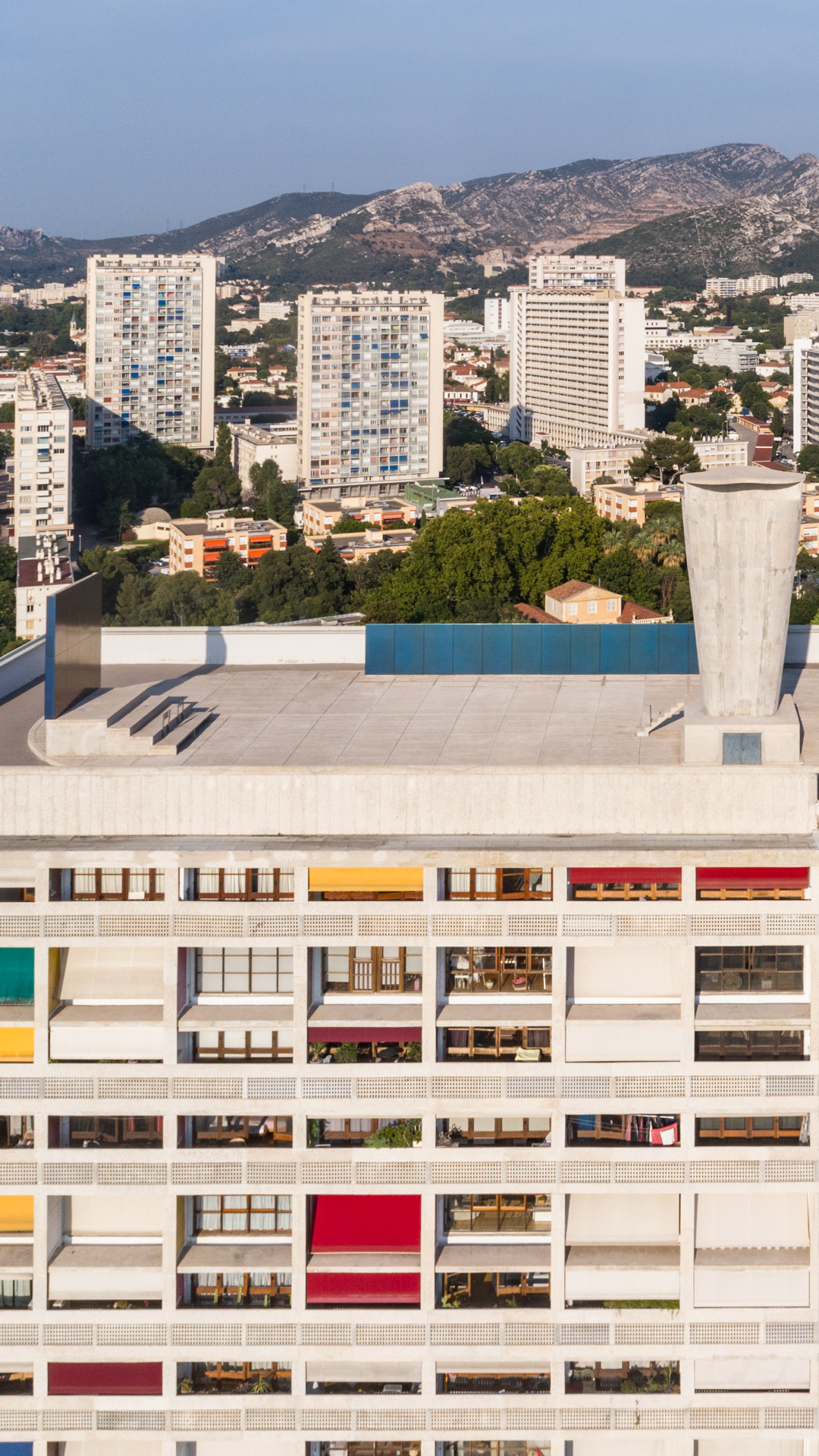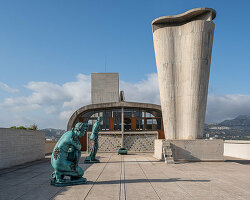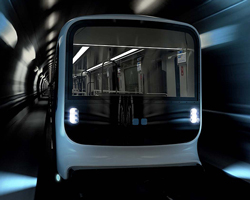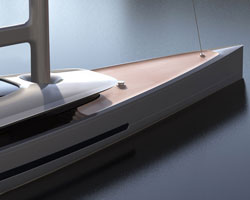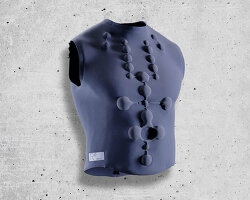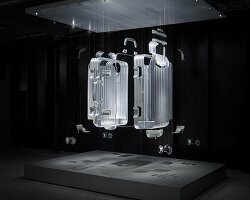situated on the very top of le corbusier’s cité radieuse in marseille — built between 1945 and 1952 — ora ito’s MAMO (marseille modulor) is a place among the clouds devoted to art and design. inaugurated in 2013, the project sees a different artist take over the rooftop every summer, focusing on the confrontation between the artwork and a space charged with le corbusier’s avant garde spirit.
‘what more could one hope for? what could be more powerful, more iconic, more inspiring or more invigorating than this roof terrace perched in the sky?’
for the opening of the alex israel show at MAMO, designboom visited marseille to discover the art space and get an insider’s view into ora ito’s ventures — including that time he slept in front of an artist’s door for days to get him to accept a show.
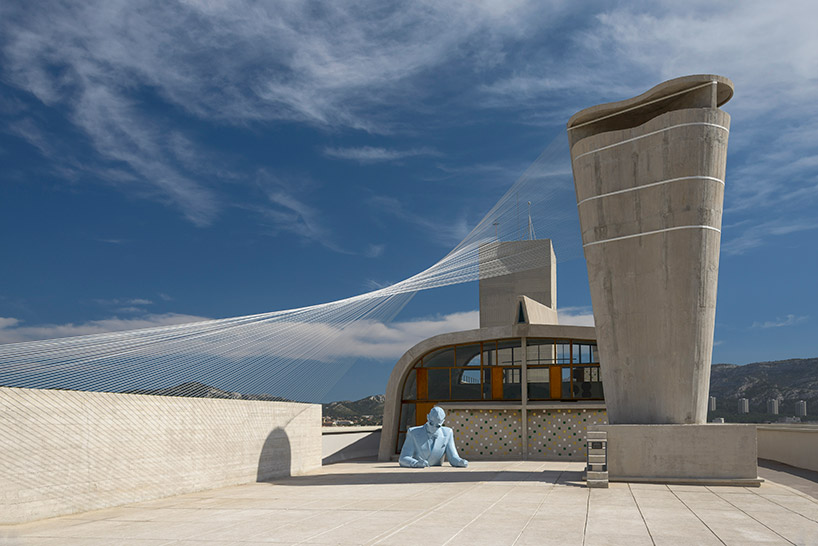
xavier veilhan at MAMO (2013)
designboom (DB): you opened MAMO in 2013 — can you tell us the story behind it?
ora ito (OI): I bought this rooftop space ten years ago because I was obsessed with it. at first I didn’t know what to do with it, I just knew I wanted to restore it to its original design — the one le corbusier had envisioned for it. so, I went to the le corbusier foundation and did a lot of research.
it took me three years to complete the project and had to pay close attention to every detail because this building is a historical monument. for example, to recreate the concrete textures we had to find the exact same wood to achieve the same print.
once the space was ready, I still didn’t know what to do with it. it was then that I found out that le corbusier used to host, on this same rooftop, the avant garde art festival — a festival that mixed dance, sculpture and music. when I saw those images full of sculptures and performances, I knew I had to turn the rooftop into a contemporary art space.
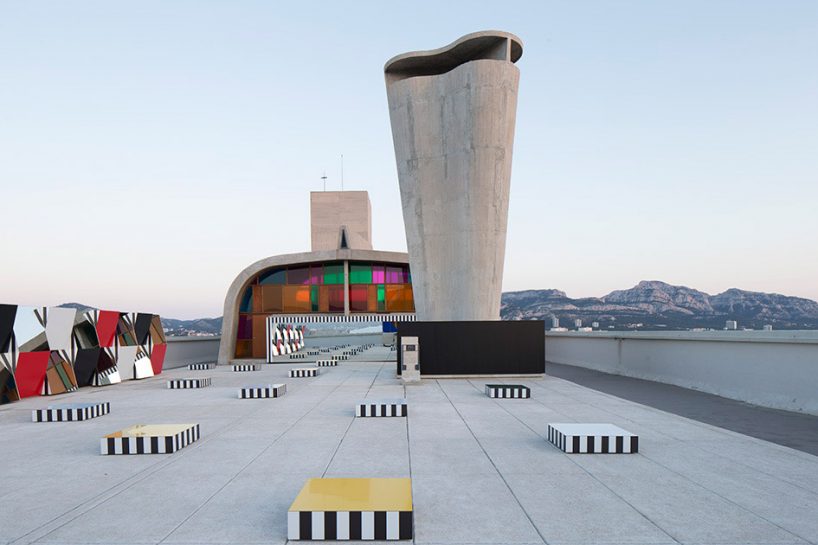
daniel buren at MAMO (2014)
DB: you are the artistic director of MAMO — how do you choose the artists?
OI: I’m not a mystical person, but I have to admit that when I’m choosing the artists, it’s completely mystical because it’s like an obsession. if I’m not obsessed, I will not do the show. for example, if the artist I want to do a show with doesn’t want to do it, then I won’t do a show either. that’s how obsessions work, they take over your mind and you can’t live without them.
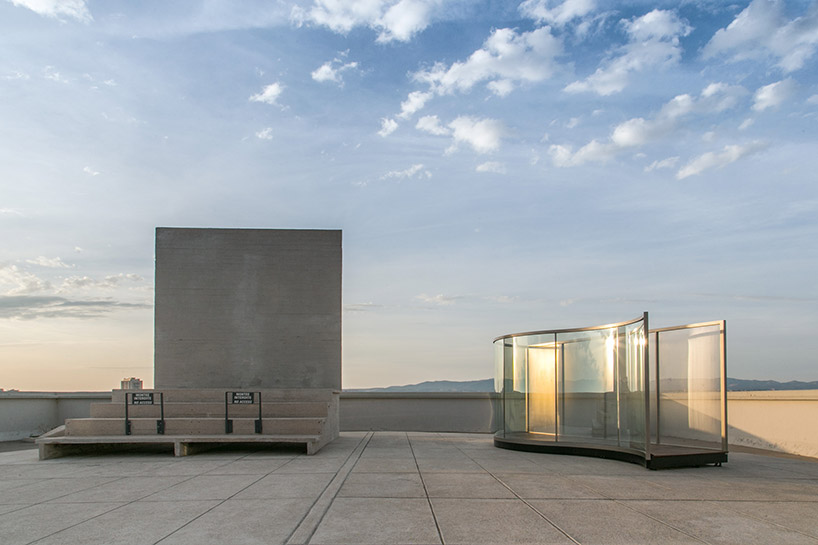
dan graham (2015)
image by WEARECONTENTS
DB: who has exhibited at MAMO?
OI: the first show I did back in 2013 was xavier veilhan which marked the opening of the space — it was an homage to le corbusier. then we did daniel buren, and he, for example, didn’t want to do the show. so I slept in front of his house, because I was obsessed, I wanted to do the show with daniel. after he saw me there, sleeping at his door for days, he agreed to do the show. it was about recomposing and bringing the environment into the show, because even though the building is beautiful, it’s also surrounded by the mountains and the sea and we wanted to bring that natural environment into the building.
after that, I was obsessed with the contrast between glass and concrete, which are the two materials most used in architecture. I thought it was interesting to play with light and heavy, with transparency, with old and new architecture. so dan graham was the one for this.
then we had felice varini who painted striking red and yellow shapes access the terrace referencing the architecture. jean pierre raynaud followed with a poetical installation for the birds by placing a monumental 17-meter arrow on the terrace’s floor. 2018 was the year of olivier mosset, who installed two monumental monochrome works.
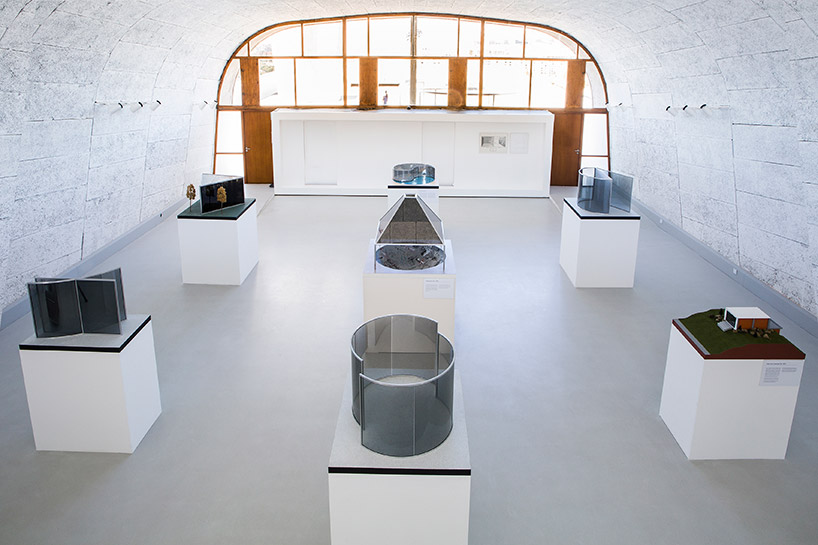
dan graham (2015)
image by WEARECONTENTS
DB: what have you learned from running MAMO?
I think an art center can only be judged through time, because it’s thanks to it that you see if there’s an identity, if there’s a point of view. with MAMO, I want to show a point of view because otherwise you have my job — I’m a designer.
it’s not my job to run an art center, but I felt that as a designer, I wanted to understand more art. working with artists has been fantastic for me because I learn a lot from them. that’s why I was working with older artists. first it was dan graham, then it was felice varini, then jean pierre raynaud, then olivier mosset… and now I decided to go with a young artist. I chose alex israel because even though he’s a young artist, he has one thing in common with the other ones and that is that he has a strong universe, he has a strong identity and everything he’s doing is so logical.
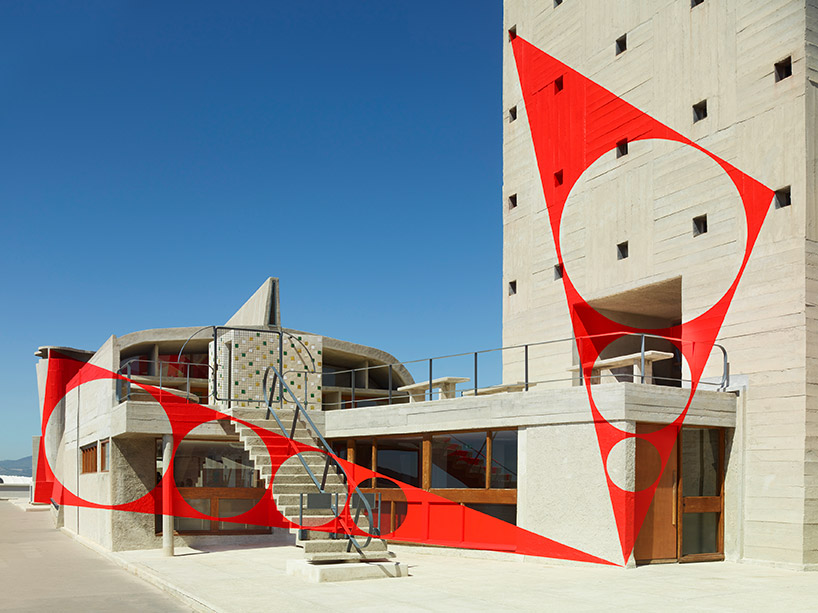
felice varini at MAMO (2016)
read more on this project on designboom here
DB: what has it been like to work with alex israel on the show?
OI: when we started working on the show, I was amazed at how he was always going back to the movie (tim burton’s 1989 batman). for example, the logos outside are exactly the same as the logos in the movie, and the diameter of the projector is also exactly the same as the original one on the film. even the logo for the invitation… everything revolves around tim burton’s 1989 batman.
alex israel is the youngest artist I have worked with, but he has already the maturity of a very old artist which I think is a good quality because it means that he has a territory. I believe that art is like having a territory and every artist I work with needs to have their own territory. this time I wanted to go more pop, more open to the new generation, but still keeping what I like. I like design, I like beautiful streamline projects, I like minimalism.
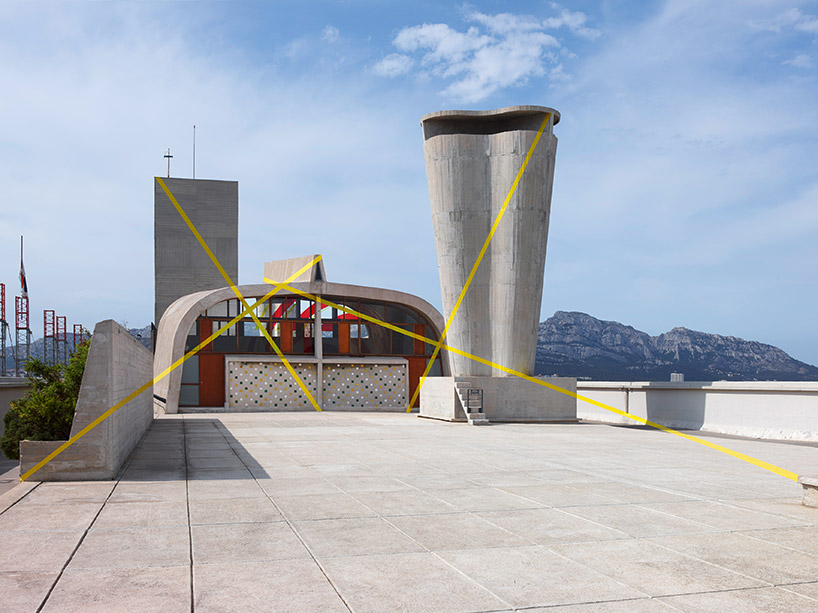
felice varini at MAMO (2016)
read more on this project on designboom here
DB: german luggage manufacturer RIMOWA is your new partner in this venture…
OI: I wanted a new partner and I really like the spirit of RIMOWA because alexandre arnault is young and he is really into the world. he really understands the world we are at now, and I want to work with people like that because they also help me understand the world too. I’m not the young kid anymore, you know? I’m 41 now, but when you start at 18 years old like I did, it’s difficult to keep up.
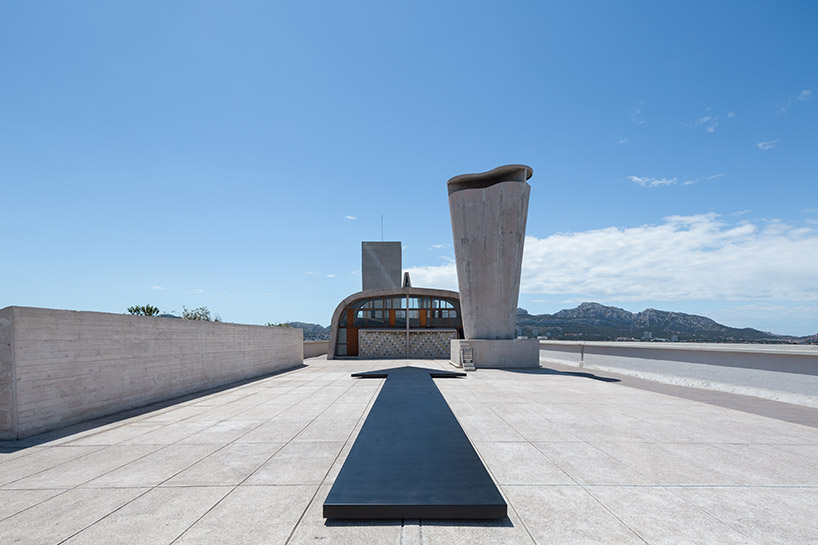
jean pierre raynaud at MAMO (2017)
image by WEARECONTENT
DB: back in 1999 you hijacked louis vuitton and created virtual products that were later acknowledged by them — what happened with this?
OI: after all my hijacked products for louis vuitton, they contacted me and I was supposed to be the director for the product design area. but, I was young and said some stupid things in an interview, and it never happened. I still have the unsigned contract you know…
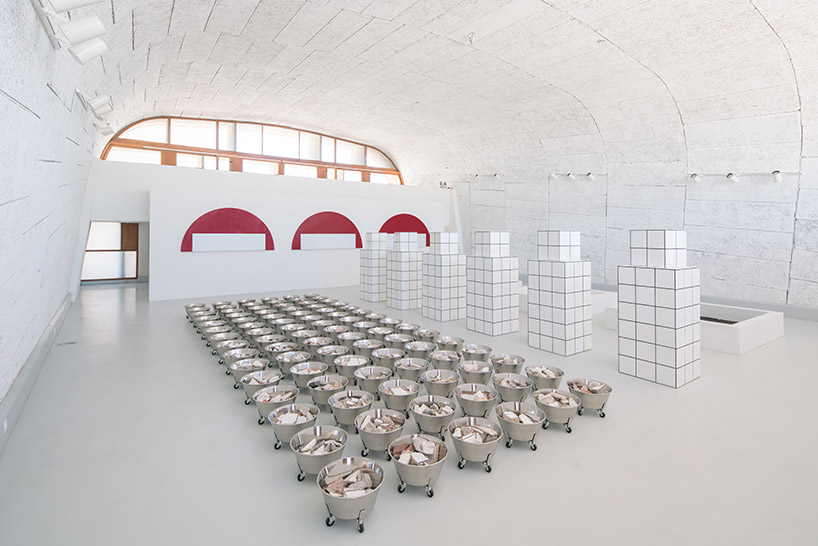
jean pierre raynaud at MAMO (2017)
image by WEARECONTENT
DB: what are you currently working on as a designer?
OI: I’m working on many projects but giving a new perspective to my career, because I think design needs to reinvent itself at the moment — we need to stop overproduction. I’m an act of that… I think I was really into design when I believed in it. I think design should stop doing things we need. it should really reinvent a new perspective for design. and I think it’s an interesting time for design because we have no choice. and if we don’t do it, it’s going to be a big problem. personally, I don’t want to be creating a new piece that looks very similar to a piece presented last year.
right now I’m very into mobility — train, trams, planes, bikes, etc.
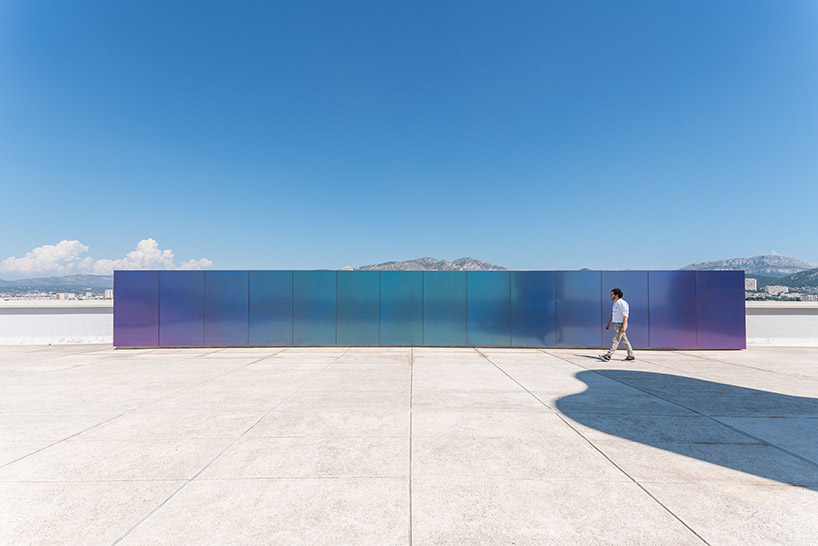
olivier morset at MAMO (2018)
image by WEARECONTENT
DB: any upcoming projects?
OI: in september, I’m presenting two new yachts in montecarlo.
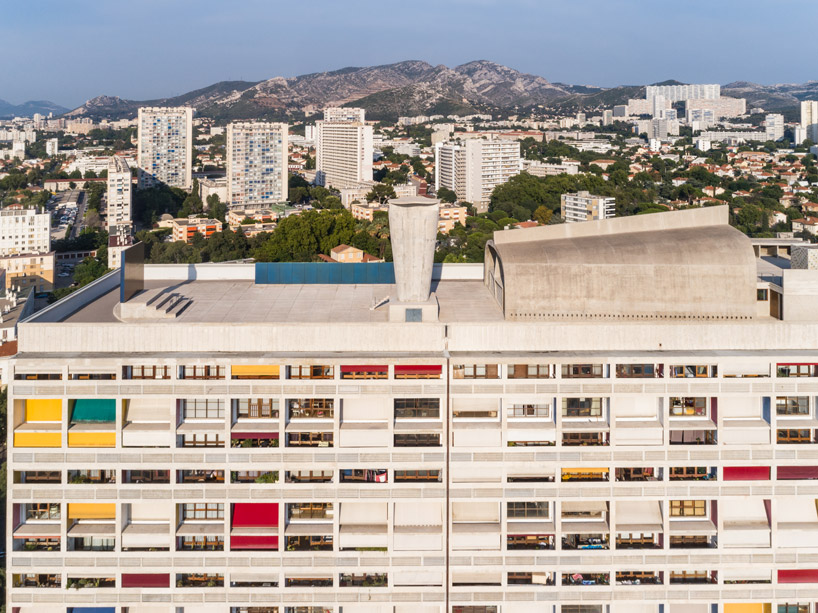
olivier morset at MAMO (2018)
image by WEARECONTENT
DB: we heard you bought an island close to marseille…
OI: yes, this is my new project. I bought an island because I believe in the idea that to find solutions you need to bring people together who have very different skills. it will be a project centered around the environment — mixing art, technology and ecology, and bringing together people on this island and creating workshops to have them discuss on different subjects. that’s what this project is about.
it’s funny because I would’ve never worked on ecology if I haven’t found a place that’s screaming at me to work around that. it’s about finding out what spaces have to say, so we can provide for them and see what they can provide for us.
like for example, MAMO, it is all about art.
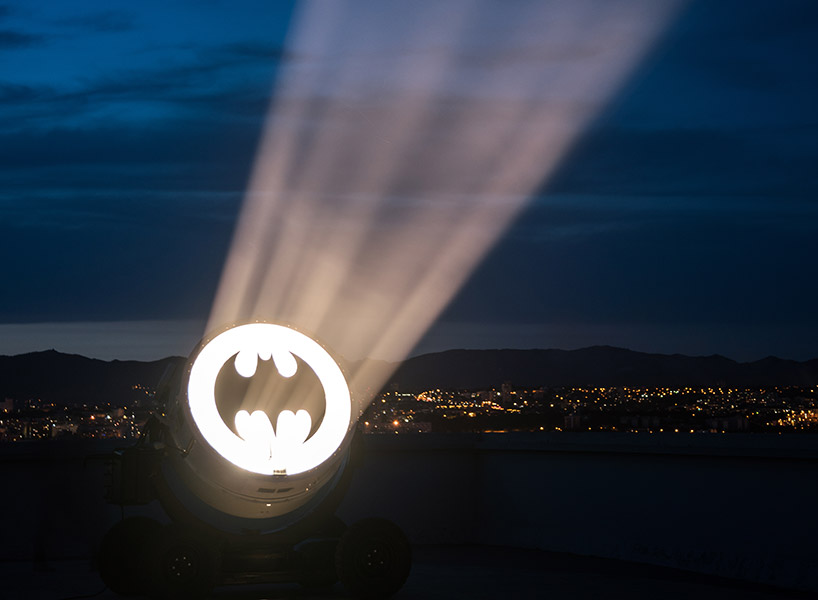
alex israel (2019)
read more on designboom here
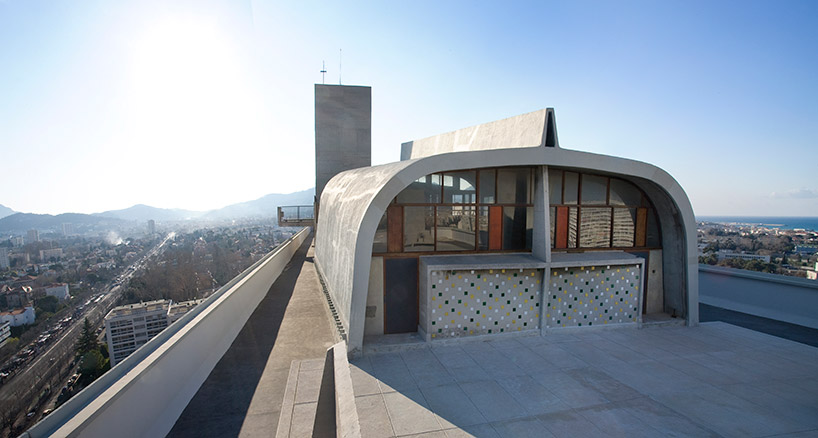
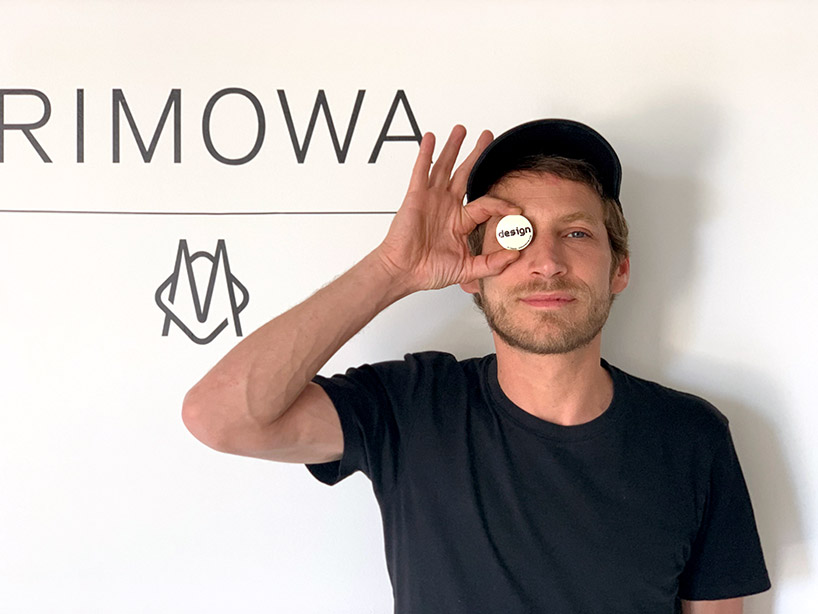
image © designboom
ora ito (21)
RIMOWA (28)
PRODUCT LIBRARY
a diverse digital database that acts as a valuable guide in gaining insight and information about a product directly from the manufacturer, and serves as a rich reference point in developing a project or scheme.
